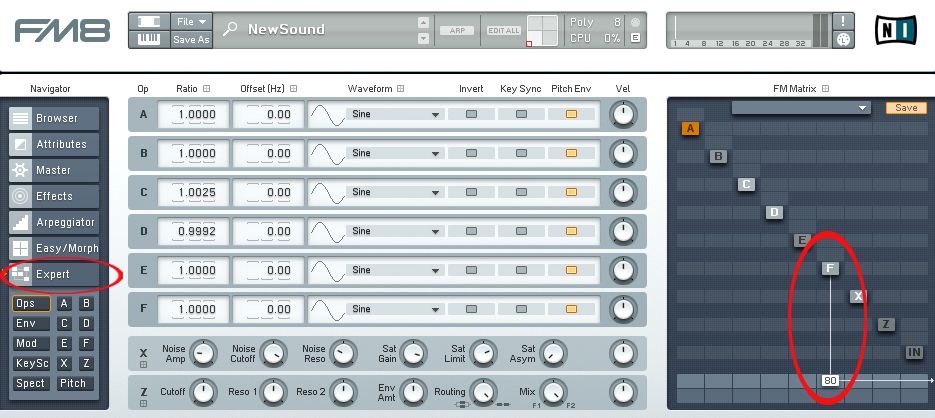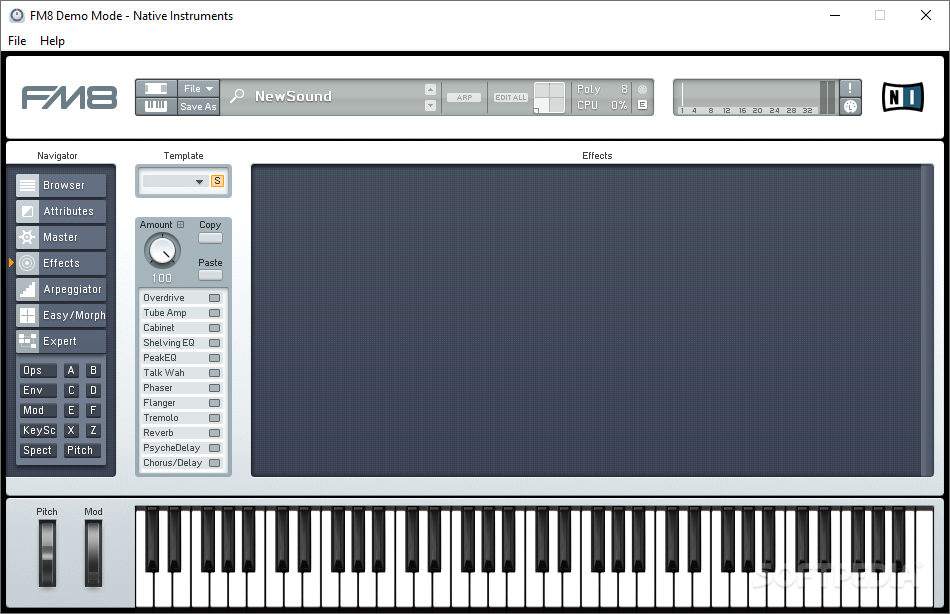
Its preset sounds constitute "struck" and "plucked" sounds with complex transients. The settings buttons include controls for effects such as portamento.Ĭompared to the "warm" and "fuzzy" sounds of analog synthesizers, the digital DX7 sounds "harsh", "glassy" and "chilly", with a richer, brighter sound. They had less than four days to create the DX7's 128 preset patches. In late 1982, Briton Dave Bristow and American Gary Leuenberger, experts on the Yamaha CS-80, flew to Japan to develop the DX7's voices. Yamaha displayed a prototype of the DX7 in 1982, branded the CSDX in reference to the Yamaha CS range of analog synthesizers.

Chowning felt this produced a noticeable "brilliant kind of sound". Yamaha also altered the implementation of the FM algorithms in the DX7 for efficiency and speed, producing a sampling rate higher than Stanford's synthesizers. At the same time, Yamaha was developing the means to manufacture very-large-scale integration chips these allowed the DX7 to use only two chips, compared to the GS1's 50. The first commercial FM synthesizer was the Yamaha GS1, released in 1980, which was expensive to manufacture due to its integrated circuit chips. Yamaha created the first hardware implementation of FM synthesis.


John Chowning, who developed the frequency modulation technology used in the DX7 Roland founder Ikutaro Kakehashi was also interested, but met Chowning six months after Yamaha had agreed to the deal Kakehashi later said Yamaha were the natural partners in the venture, as they had the resources to make FM synthesis commercially viable. In 1975, Yamaha negotiated exclusive rights for the technology. I guess Yamaha had already been working in the digital domain, so he knew exactly what I was saying." Yamaha licensed the technology for one year to determine its commercial viability, and in 1973 its organ division began developing a prototype FM monophonic synthesizer. One of their chief engineers visited Stanford and, according to Chowning, "in ten minutes he understood. Īt the time, the Japanese company Yamaha was the world's largest manufacturer of musical instruments but had little market share in the United States. Chowning felt their engineers, who were used to analog synthesis, did not understand FM.
#Fm8 reviews license#
Stanford patented the technology and hoped to license it, but was turned down by American companies including Hammond and Wurlitzer. In 1971, to demonstrate its commercial potential, Chowning used FM to emulate acoustic sounds such as organs and brass. In the 1960s, at Stanford University, California, John Chowning developed FM synthesis, a means of using FM to generate sounds different from analog synthesis. The DX7 was succeeded by FM synthesizers including the DX1, DX5, DX9, DX11, DX21, DX27 and DX100.īy the mid-20th century, frequency modulation (FM), a means of carrying sound, had been understood for decades and was widely used to broadcast radio transmissions. Producer Brian Eno mastered the programming and it was instrumental to his work in ambient music.

Its electric piano sound was particularly widely used, especially in power ballads. However, its preset sounds became staples of 1980s pop music, used by artists including A-ha, Kenny Loggins, Kool & the Gang, Whitney Houston, Chicago, Phil Collins, Luther Vandross, and Billy Ocean. With its complex menus and lack of conventional controls, few learned to program the DX7 in depth. Yamaha licensed the technology to create the DX7, combining it with very-large-scale integration chips to lower manufacturing costs. FM synthesis created brighter, "glassier" sounds, and could better imitate acoustic sounds such as brass. FM synthesis, a means of generating sounds via frequency modulation, was developed by John Chowning at Stanford University, California. In the early 1980s, the synthesizer market was dominated by analog synthesizers. It was the first successful digital synthesizer and is one of the best-selling synthesizers in history, selling over 200,000 units. The Yamaha DX7 is a synthesizer manufactured by the Yamaha Corporation from 1983 to 1989. MIDI in/out/thru, input for foot controller x2, input for foot switch x2, input for optional breath controller Digital programmable algorithm synthesizer Ħ digital sine wave operators per voice, 32 patching algorithms ġ pitch envelope & 6 amplitude generators per voiceģ2 patches in RAM (battery backup) front panel ROM/RAM cartridge port


 0 kommentar(er)
0 kommentar(er)
